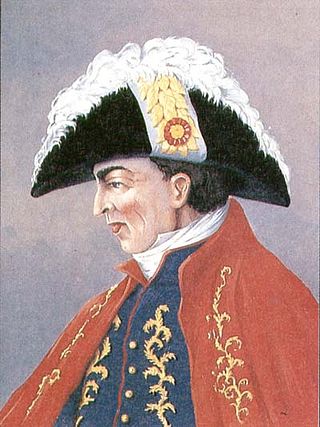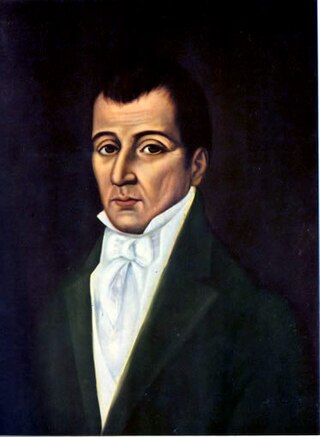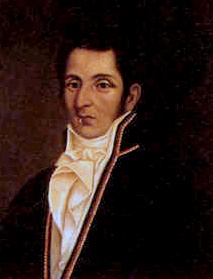
Colombia, officially the Republic of Colombia, is a country mostly in South America with insular regions in North America. The Colombian mainland is bordered by the Caribbean Sea to the north, Venezuela to the east and northeast, Brazil to the southeast, Ecuador and Peru to the south and southwest, the Pacific Ocean to the west, and Panama to the northwest. Colombia is divided into 32 departments. The Capital District of Bogotá is also the country's largest city hosting the main financial and cultural hub, and other major urbes include Medellín, Cali, Barranquilla, Cartagena, Santa Marta, Cúcuta, Ibagué, Villavicencio and Bucaramanga. It covers an area of 1,141,748 square kilometers, and has a population of around 52 million. Colombia is the largest Spanish-speaking country in South America. Its cultural heritage—including language, religion, cuisine, and art—reflects its history as a colony, fusing cultural elements brought by immigration from Europe and the Middle East, with those brought by the African diaspora, as well as with those of the various Indigenous civilizations that predate colonization. Spanish is the Official language, although English and 64 other languages are recognized regionally.

Antonio José Amar y Borbón Arguedas was a Spanish military officer and colonial official. From September 16, 1803 to July 20, 1810 he was viceroy of New Granada. During his mandate he faced the beginning of the independence movement. He is also remembered for introducing costumes and masked balls in the society of Bogotá.

Manuel de Bernardo Álvarez del Casal was an influential Criollo figure in New Granada at the time of the independence movement. He occupied several important positions in the rebel government. He was also the uncle of Antonio Nariño, forerunner of independence. He served as president of the rebel State of Cundinamarca in 1814.

José Miguel Pey y García de Andrade was a Colombian statesman and soldier and a leader of the independence movement from Spain. He is considered the first vice president and first president of Colombia. He was a centralist.

The United Provinces of New Granada was a country in South America from 1810 to 1816, a period known in Colombian history as la Patria Boba. It was formed from areas of the New Kingdom of Granada, roughly corresponding to the territory of modern-day Colombia. The government was a federation with a parliamentary system, consisting of a weak executive and strong congress. The country was reconquered by Spain in 1816.

Juan José Francisco de Sámano y Uribarri de Rebollar y Mazorra, was a Spanish military officer and viceroy of New Granada from 1818 to 1819, during the war of independence.

José María Ramón Obando del Campo was a Neogranadine General and politician who twice served as President of Colombia. As a General, he initially fought for the Royalist Army during the Independence Wars of Colombia, ultimately joining the revolutionary forces of Simón Bolívar towards the end, but once independence was attained he opposed Bolívar's Centralist government.

José Custodio Cayetano García Rovira was a Neogranadine general, statesman and painter, who fought for the independence of New Granada from Spain, and became President of the United Provinces of the New Granada in 1816. He was executed a month later during the Reconquista, at the hands of Pablo Morillo.

Antonio Villavicencio y Verástegui was a statesman and soldier of New Granada, born in Quito, and educated in Spain. He served in the Battle of Trafalgar as an officer in the Spanish Navy with the rank of Second Lieutenant. He was sent as a representative of the Spanish Crown to New Granada, where his arrival was used as an excuse in Santafé de Bogotá to start a revolt; this was known as the Florero de Llorente, which culminated in the proclamation of independence from Spain. After this incident he resigned his office and joined the cause of independence. He was later captured and became the first martyr executed during the reign of terror of Pablo Morillo.

José Joaquín Justo Camacho Lago was a Neogranadine statesman, lawyer, journalist and professor, who worked for the Independence of the New Granada, what is now Colombia, and participated in the Open Cabildo which declared the Act of Independence, of which he was also a signer. He was executed during the Reign of Terror of Pablo Morillo after the Spanish invasion of New Granada.

Manuel Rodríguez Torices was a Neogranadine statesman, lawyer, journalist, and Precursor of the Independence of Colombia. He was part of the Triumvirate of the United Provinces of New Granada in 1815, and served as Vice President of the United Provinces after the triumvirate. He was executed during the Reign of Terror of Pablo Morillo in 1816.

Jorge Tadeo Lozano de Peralta, Viscount of Pastrana was a Neogranadine scientist, journalist, and politician who presided over the Constituent College of Cundinamarca and was elected President of Cundinamarca in 1811.

The Colombian Declaration of Independence occurred on July 20, 1810 when the Junta de Santa Fe was formed in Santa Fe de Bogota, the capital of the Spanish colonial Viceroyalty of New Granada, to govern the territory autonomously from Spain. The event inspired similar independence movements across Latin America, and triggered an almost decade-long rebellion culminating in the founding of the Republic of Gran Colombia, which spanned present-day Colombia, mainland Ecuador, Panama, and Venezuela, along with parts of northern Peru and northwestern Brazil.

Juan José Nieto Gil was a Colombian politician, Army general and writer. A Liberal party caudillo of Cartagena, he served interimly as Governor of the Province of Cartagena, and was later elected President of the Sovereign State of Bolívar from 1859 to 1864. In 1861, during the Colombian Civil War, he fought on the side of the Liberal rebels against the Administration of President Mariano Ospina Rodríguez, and acting in rebellion proclaimed himself President of the Granadine Confederation in his right as the Presidential Designate, relinquishing power four months later to the Liberal leader, General Tomás Cipriano de Mosquera y Arboleda, who led a successful coup d'état against the Conservative Government in Bogotá.
Juan (Francisco) de Céspedes Ruiz was a Spanish conquistador who is known as the founder of the town of Pasca, Cundinamarca, in the south of the Bogotá savanna, Colombia. De Céspedes arrived in the Americas in 1521 and participated in the conquest of the Tairona and the foundation of Santa Marta under Rodrigo de Bastidas. From 1542 to 1543 and in 1546 he served as mayor of Bogotá and after that until 1570 as lieutenant general of the first president of Colombia. Juan de Céspedes married Isabel Romero, one of the first Spanish women who arrived at Colombian territories and had two legitimate sons and one daughter. His date of death is uncertain; in late 1573 or 1576.

Juan José Reyes-Patria Escobar (1785–1872) was a Colombian Independence War General.

The 1827 Guayaquil uprising, also known as the Guayaquil Department rebellion, was a rejection of the centralist policies of Gran Colombia. This was one of the first separatist rebellions in the country of Gran Colombia before it dissolved in 1829.
The Ricaurtes are a prestigious aristocratic family from Colombia, very important during the 18th and 19th centuries in this country, especially in the period of South American Independence. Its origin is in Vizcaya, Spain.

Luis de Ayala y Vergara was a criollo lawyer, politician from the capital of the Viceroyalty of the New Granada. During the South American independence he held the presidency of Colombia, and exercised the executive power as State Councilor in 1812 due to the absence of President Antonio Nariño. Ayala y Vergara is considered one of the first heads of state of the young Colombia.

















